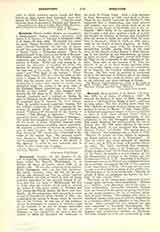

Berrettini, PIETRO (called PIETRO DA CORTONA), a distinguished Italian painter, architect, and writer, b. at Cortona, in Tuscany, November 1, 1596; d. at Rome, May 16, 1669. He studied first under his uncle, Filippo Berrettini, and then at Florence under Andrea Commodi. At the age of fifteen he left that city for Rome, and entered the studio of Baccio Ciarpi, a Florentine painter. There he applied himself to the study of the works of Raphael, Michelangelo, and Polidoro, to that of the antique sculptures and notably of the bas-reliefs of the column of Trajan. While still very young he attracted the attention of Cardinal Sacchetti, who became his protector, and for whom were painted the first two of his works, “The Battles of Alexander” and “The Rape of the Sabines”. Thereupon, Pope Urban VIII gave him the order to decorate a chapel of the church of Santa Bibiana. Such was his success there that he received the commission to paint what proved to be his most celebrated work, the ceiling of the great salon of the Barberini Palace, representing, in allegory, the history of that family. He then designed some mosaics for the dome of St. Peter’s. After a trip through Lombardy and a sojourn at Venice, he went to Florence, where the Grand Duke Ferdinand II employed him to decorate the Pitti Palace. There he painted several important frescoes, but left without completing the series, angered by the actions of jealous rivals. The compositions included “Clemency of Alexander to the Family of Darius”, “The History of Masinissa”, “The Continence of Cyrus”, and “The Firmness of Porsenna”. The work was completed by his pupil Ciro Ferri. On his return to Rome Berrettini received many important commissions, acquiring a great reputation. He executed a number of frescoes in churches, as well as easel pictures. He became wealthy, and Pope Alexander VII created him a Chevalier of the Order of the Golden Spur. His principal pupils were Francesco Romanelli, Ferri, Testa, Giordano, and Borgognone. He is buried in the church of San Martino, of which he was architect, and to which he left a large sum of money.
AUGUSTUS VAN CLEEF

